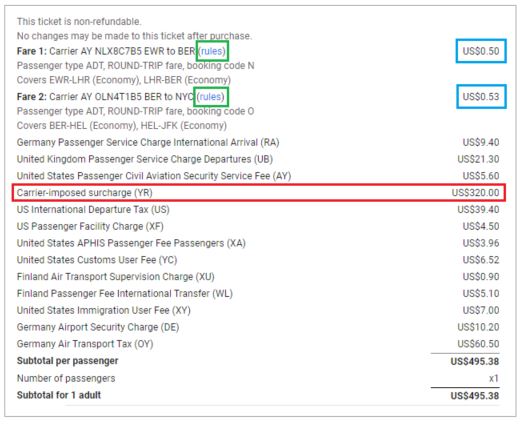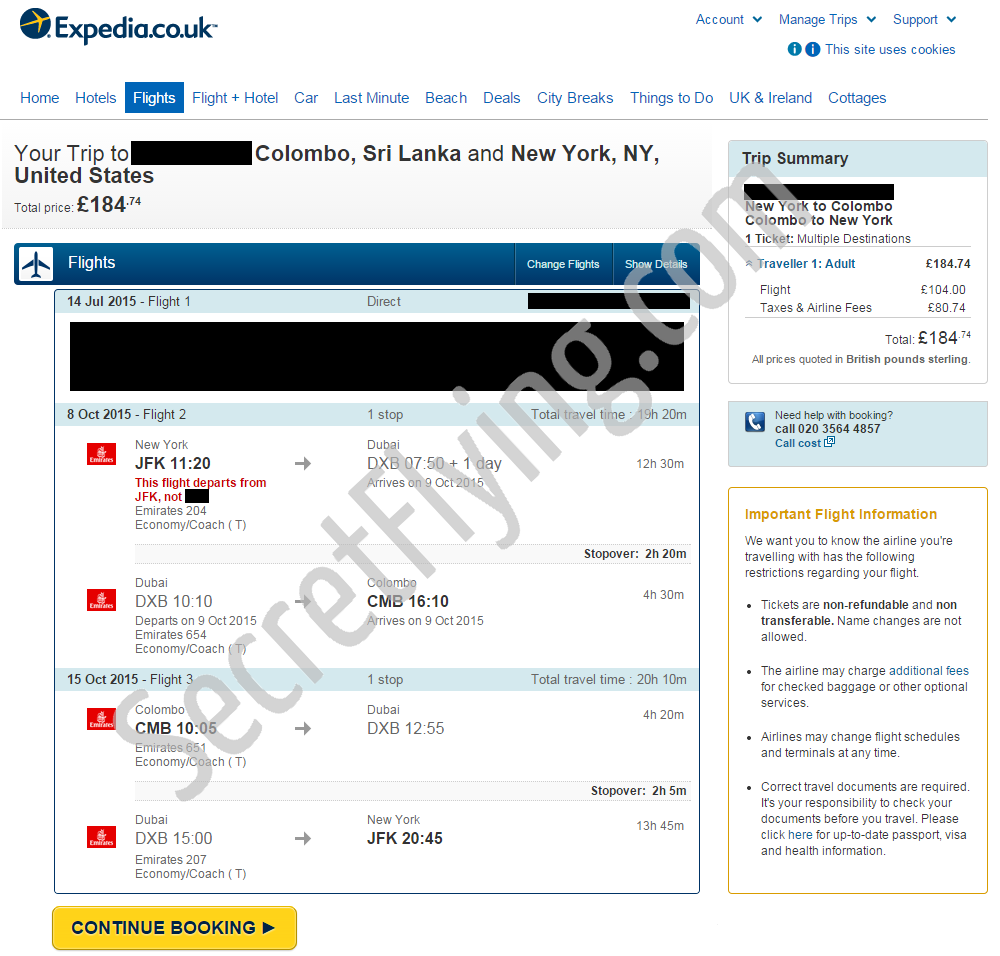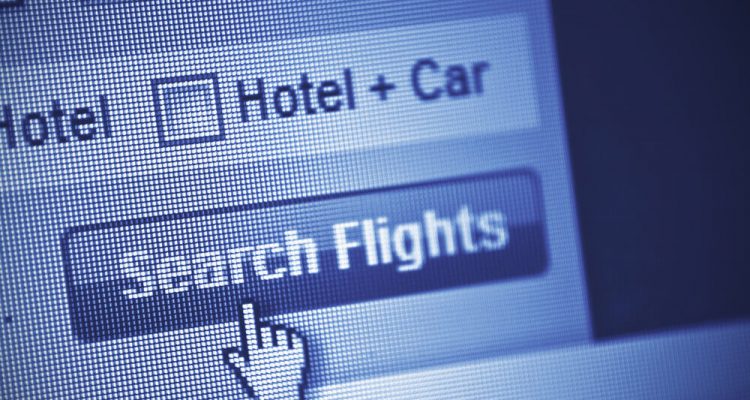“Fuel Dumping” is the term generally given to when an aircraft disposes fuel mid-air prior to landing. This often occurs when a plane is forced to make a landing short of its intended destination to lighten the aircraft’s weight.
However, there is another more secretive meaning to the term “Fuel Dumping.” It involves intentionally pairing two separate flights on the same ticket in the hope that the fuel surcharge component of the main, more expensive flight is dumped/eliminated. Have a read of this previous blog post to gain a better understanding of the fuel surcharge component and why it exists.
We will now go through the basics of “Fuel Dumping” which will help you better understand this practice and the steps needed to successfully achieve a “dump”. Please note, this article is strictly for educational purposes only.
Here are the stages needed to make a successful dump:
1. Find a Candidate Fare
A good candidate fare consists of a very low base fare and a high fuel surcharge. This is because even if you manage to dump the fuel surcharge, you still have to pay the flight’s base fare and taxes. If the base fare is very expensive, then there’s less reason to dump the flight.
The ITA Matrix website allows you to view the price breakdown for any flight.
The blue box in the image is where you can find the cost of the base fare.
The fuel surcharge component of a ticket is often labelled as “YQ” or “YR” (red box in the image). You ideally want this to take up a large portion of the overall ticket price.

Once you have found a flight with a low base fare and high fuel surcharge (like the one in the image above), you must then find out if the flight is actually dumpable – because not all flights are.
The fare rules determine what a particular flight can and can’t do. For example, how many stops are permitted; the required minimum stay; costs associated with changes. Again, the ITA Matrix website allows you to view the fare rules by clicking “rules” beside the flight details (green box in the image above).
Within the rules, the “Combinability” section determines whether the flight is dumpable and what specific rules are associated with it. If “END-ON-END COMBINATIONS” and “SIDE TRIPS” are both permitted, then you have likely found a dumpable flight.

So now you have found a flight with a low base fare, a high fuel surcharge, and permitted combinability rules, you can proceed to the next stage.
2. Finding the Strike
The extra flight added on to the itinerary that causes the fuel dump to occur is called the “strike”. This flight should be short and inexpensive, otherwise it defeats the purpose of this whole practice. The strike can occur anywhere in the world with any airline, so finding one may take some time. Always try to aim for strikes that are less than 60 minutes long in flight duration as they are typically inexpensive. Remember, some dumps are OTA specific so it’s recommended to search using a flight aggregator like Momondo or Skyscanner. You will have to use the multi-city search option, as you are inputting at least 3 separate legs.
There are a number of places you can position the strike in your itinerary.
The most common are:
-before the main flights (1x)
-after the main flights (3x)
-inbetween the main flights (2x)
-both before and after the main flights (1/4x)
Typically, 1x strikes have the most successful results often achieving a 100% fuel dump. They are also much easier to find. The downside to the 1x is that because this flight takes place before the main flight, you typically MUST fly it, even if it departs on the other side of the world. If you do not show up for your 1x strike, the rest of your ticket is automatically cancelled.

In this Expedia image, you can see a 1x strike is used to dump the fuel surcharge on the New York to Colombo, Sri Lanka round-trip flight with Emirates. The fuel surcharge is completely eliminated, leaving the customer with only £184 (approx. $220) to pay.
We have blacked out the strike details.
The most convenient strike is a 3x.
This is because the strike takes places AFTER your main flight so there is no need to fly it.
If you find a working strike, it is very likely it will dump other flights too – so keep a note of it.
3. Booking your ticket
If you decide to book a fuel-dumped ticket, you must understand the risks involved. Fuel dumping enthusiasts who regularly fly these types of tickets, minimise the amount of human interaction involved with their booking. Calling the airline’s customer service department for a date change or a refund is asking for trouble. A knowledgeable airline employee will notice the irregular itinerary, so it’s highly recommended to simply book your tickets, check-in online and fly.
Many newcomers to this practise are often concerned about the consequences of being caught by an airline. In theory, if an airline notices your fuel-dumped ticket, they could deny you boarding unless you paid the full ticket fare.
Most Fuel Dumping enthusiasts are careful about who they share their strikes with. The more people that book these types of flights, the more likely an airline will notice and fix the glitch.



 [adblockingdetector id="638efa67113bf"]
[adblockingdetector id="638efa67113bf"]